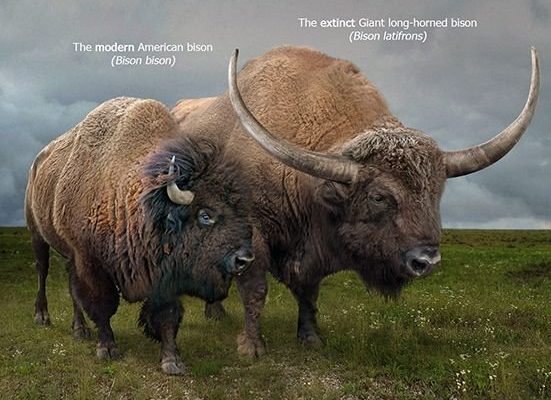![Comparing The Bison Vs. [Similar Species]](https://gudri.com/wp-content/uploads/2025/06/Comparing_The_Bison_Vs___Similar_Species__image_0.jpg)
So why does it matter? Understanding the differences between these iconic symbols of North American wilderness not only enriches our appreciation of wildlife but also helps us recognize the roles they play in their ecosystems. Grab a cup of coffee and let’s explore the fascinating world of bison and buffalo together.
Physical Characteristics
Let’s start with the basics: the looks. A bison is often characterized by its massive head and shaggy mane, which gives it a regal appearance. With a hump on its back, the bison’s shape is somewhat unique. You can think of it as a giant furry tank lumbering across the plains. Adult bison can weigh anywhere from 1,000 to 2,200 pounds, making them one of the largest land mammals in North America.
On the other hand, the buffalo generally has a smoother silhouette. The African buffalo, for example, sports curved horns and a more slender body compared to the bison. Asian water buffalo, known for their heavyset build and large horns, can also be found in domestic settings, helping farmers plow fields. Both species have thick skin, which protects them from harsh weather and thick fur to insulate against the cold, but bison tend to have a more pronounced hump and a distinctive beard.
Habitat and Range
Now let’s talk about where these animals call home. American bison are mostly found in the grasslands and plains of North America. You might see them in national parks like Yellowstone or Custer State Park, where they roam freely in herds. Their preference for open grasslands allows them to graze on the vast amounts of grass available, which is their primary source of food.
Buffalo, however, have different preferences. The African buffalo prefers the savannah and forest areas of Africa, often found in large groups. These animals thrive in warmer climates, where they can find ample water sources. Asian water buffalo typically inhabit wetlands and rice paddies in countries like India and Vietnam, where they assist in agriculture. This difference in habitat shows how each animal has adapted to meet its specific needs.
Diet and Eating Habits
Let’s chew on their diets for a moment—pun intended! Both bison and buffalo are herbivores, but they have slightly different eating habits based on their ecosystems. Bison primarily consume grasses, which makes sense given their habitat. They eat a variety of plants but prefer short grasses that grow on the plains. Their digestive systems are uniquely adapted to process this fibrous food, making them efficient grazers.
Buffalo, on the other hand, have a broader diet. African buffalo enjoy grasses but will also munch on shrubs, making them somewhat less picky than bison. Asian water buffalo, raised specifically for farming, often eat a combination of grass and agricultural byproducts. This versatility allows them to thrive in various environments, which is vital for their survival and for the farmers who depend on them.
Behavior and Social Structure
Let’s get into the social lives of these creatures. Bison tend to form smaller groups of females and their young, while males often roam solo or form bachelor groups. This social structure helps protect the calves from predators while allowing males to assert dominance in a less crowded environment. You might notice that bison are somewhat territorial, especially during mating seasons.
Buffalo, particularly the African variety, have a more communal approach to life. They gather in large herds that can number in the hundreds, providing safety in numbers against predators like lions. The social bonds in buffalo herds are quite strong, often involving cooperative parenting and mutual grooming. It’s fascinating how these differences in behavior reflect their adaptive strategies to survive in the wild.
Conservation Status
In terms of conservation, bison and buffalo face different challenges. The American bison has seen a significant decline due to overhunting and habitat destruction, but thanks to conservation efforts, their numbers are rebounding. Organizations and parks are working hard to protect their habitats and educate the public about their importance in the ecosystem.
Conversely, the African buffalo is less endangered but still faces threats from habitat loss and poaching. They play a critical role in their ecosystem, helping to manage plant growth and providing food for predators. While both animals have made strides in conservation, ongoing efforts are essential to ensure their survival.
Cultural Significance
Finally, let’s chat about how these animals fit into human culture. Bison hold a significant place in Native American culture, symbolizing strength and resilience. They were not only a source of food but also played a vital role in the spiritual lives of many tribes. Buffalo hide and bones were used for tools, clothing, and ceremonial practices.
Buffalo, particularly the African kind, also embody cultural significance in various communities. In many African cultures, they symbolize wealth and status through livestock ownership. In agriculture, they are invaluable as draft animals, helping to plow fields. This cultural connection shows just how intertwined humans are with these majestic animals, underscoring our responsibility to protect them.
Final Thoughts
So, there you have it! Bison and buffalo, though often confused, are uniquely fascinating animals that contribute to their ecosystems in different ways. Understanding their differences helps us appreciate not just their beauty but also the roles they play in the environment and human culture. As we work towards their conservation, let’s remember the importance of each species in maintaining the balance of our natural world. Whether you’re lucky enough to spot a bison in a national park or admire a buffalo in a distant field, these animals remind us of the wild places that still exist and need protection.

